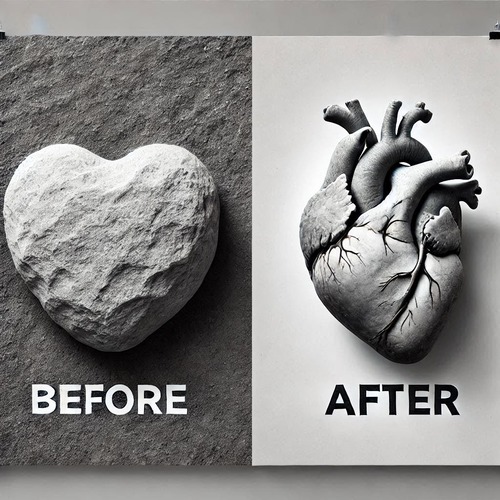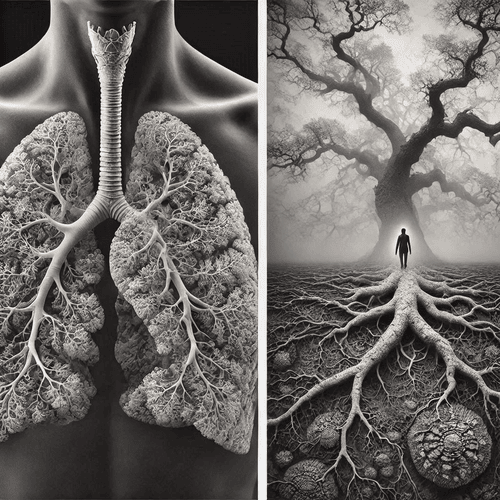The Human Knee: Where Evolution’s Kneejerk Explanations Fail
Walk, run, jump, climb, kneel, squat—all these movements depend on a remarkable piece of biological engineering: the human knee. As the largest and most complex joint in our body, the knee performs feats that would impress any engineer. Yet evolutionary theory asks us to believe this masterpiece emerged through random mutations guided only by survival pressures.
When we look deep into the knee’s intricate design, the standard evolutionary explanations begin to appear more like kneejerk responses than substantive answers. This complexity raises a profound question: Could such precise engineering have emerged without direction or purpose? Let’s examine what makes the human knee a challenge to purely naturalistic explanations.
THE REMARKABLE STRUCTURE OF THE HUMAN KNEE
The knee isn’t just a simple hinge—it’s a sophisticated mechanical system comprising:
- Four precisely shaped bones (femur, tibia, fibula, and patella) that fit together with remarkable precision
- Four primary ligaments (let’s call them ACL, PCL, MCL, and LCL) providing stability in multiple directions while allowing movement
- Two C-shaped menisci acting as shock absorbers and weight distributors
- Specialised articular cartilage creating nearly frictionless surfaces
- A synovial membrane producing lubricating fluid exactly where needed
What makes the structure so remarkable isn’t just the individual components, but their interdependence. Each element’s size, shape, and position corresponds perfectly with the others. The femoral condyles match precisely with the tibial plateau and menisci. The patella fits exactly into its groove on the femur. The ligaments connect at specific points with precise tensions.
This isn’t just complexity—it’s specified complexity, where multiple parts coordinate perfectly for function. While a watch found on a beach immediately suggests a watchmaker, somehow, we’re asked to believe the far more sophisticated knee joint assembled itself through undirected processes.
ENGINEERING PRINCIPLES IN THE HUMAN KNEE
Engineers have long recognised sophisticated design principles in the knee that mirror our best mechanical systems:
- A four-bar linkage mechanism—the knee employs a principle used in advanced mechanical engineering—to control motion through a complex path while maintaining stability. This same mechanism took human engineers centuries to perfect for machinery.
- The progressive resistance system in the knee resembles modern suspension design, providing increasing resistance as the joint approaches its limits. This prevents damage while optimising energy use—a feature still challenging to engineer artificially.
- The self-lubricating system: Perhaps most impressive is the synovial fluid which lubricates the joint. It has remarkable properties: it becomes less viscous during movement (unlike mechanical oils that thin with heat), delivers nutrients to cartilage, and removes waste products. Engineers still struggle to create lubricants with these adaptive properties.
- The load-bearing efficiency of the knee is another marvel. During activities like climbing stairs, your knees bear forces up to seven times your body weight. Despite this, a healthy knee can function decades longer than any artificial joint we’ve created. This efficiency exists despite the knee’s relatively light weight and compact design.
These aren’t just happy accidents—they’re integrated engineering solutions that appear fully formed rather than incrementally developed.
IRREDUCIBLE COMPLEXITY ARGUMENT
Perhaps the strongest challenge to evolutionary explanations is the knee’s irreducible complexity—the fact that all components must be present simultaneously for proper function.
Consider what happens when just one element fails: A torn ACL destabilises the joint. A damaged meniscus leads to bone-on-bone friction. An improperly tracking patella causes pain and wear. Insufficient synovial fluid results in increased friction and damage.
The evolutionary puzzle becomes clear: how could such interdependent structures evolve gradually? What survival advantage would half a knee mechanism provide? The cruciate ligaments require specific attachment points, lengths, and strengths to function—alterations to any of these parameters render them not just less effective, but potentially harmful.
The precise relationship between the femoral condyles and patellar tracking illustrates this problem perfectly. The patella must glide within a specific groove in the femur, with exactly the right depth and angle. Too shallow, and the patella dislocates; too deep, and movement becomes restricted. This precision suggests a system designed as a unified whole rather than assembled through random steps.
THE PROBLEM OF SIMULTANEOUS OPTIMISATION
Engineers recognise design often involves trade-offs. Increase stability, and you typically sacrifice flexibility. Add strength, and you usually add weight. Yet the knee somehow optimises multiple competing functions simultaneously. Sample these:
- It provides remarkable stability during standing while allowing approximately 150° of flexion during movement
- It delivers incredible strength while maintaining minimal weight
- It balances durability for decades of use with sensitivity and adaptability to changing conditions
This simultaneous optimisation is telling. In engineering, optimising multiple competing variables requires foresight and planning—precisely the elements that natural selection lacks. Natural selection can only select for immediate advantages, with no ability to work toward future functionality.
The menisci provide a clear example. These crescent-shaped cartilages aren’t simple cushions—they’re precisely engineered structures with varying thickness, attachment points, and material properties that distribute weight perfectly across the joint surface. Their complex shape optimizes multiple functions simultaneously, suggesting a unified design rather than gradual adaptation.
EVIDENCE FROM BIOMECHANICS
Modern biomechanical analysis reveals even more design elegance. The knee contains a sophisticated proprioceptive feedback system—specialised sensors that provide instant information about joint position, movement, and strain.
These sensors connect to muscles through neural pathways that allow microsecond adjustments to maintain stability and prevent injury. This system operates faster than conscious thought, integrating information from multiple sources to optimise movement in real-time.
The challenge of replicating knee function becomes evident when we examine artificial knee development. Despite decades of research and billions in funding, the best artificial knees remain poor substitutes for the original. They wear out faster, provide less stability, allow less range of motion, and lack the feedback mechanisms of natural knees.
Engineers with access to advanced materials, computer modelling, and centuries of accumulated knowledge still cannot fully replicate what supposedly emerged through undirected processes. This disparity should give us pause when considering explanations for the knee’s origin.
CONCLUSION
The human knee represents a level of engineering that challenges purely materialistic explanations. Its integrated complexity, simultaneous optimisation of competing functions, and implementation of sophisticated mechanical principles all point toward intentional design rather than undirected processes.
When we examine the knee through the lens of engineering rather than evolutionary presuppositions, the evidence for design becomes compelling. The knee isn’t just complex—it displays the kind of specified complexity that invariably signals intelligent input.
The knee may indeed be telling us something profound about our origins—if only we’re willing to listen without kneejerk assumptions limiting our investigation.
RELATED FAQs
Hasn’t evolution provided a clear pathway for knee development from earlier mammals? While evolutionists propose theoretical pathways, these remain speculative models lacking transitional fossils showing actual knee development. The fossil record reveals fully-formed knee joints rather than the countless intermediate structures evolution would require. Most evolutionary explanations rely on comparing modern animals’ joints rather than demonstrating actual transitional forms, confusing similarity with evolutionary ancestry.
- Don’t the knee’s vulnerability to injury and design flaws prove it evolved rather than being designed? Design constraints aren’t the same as design flaws. The knee represents an optimal solution balancing competing demands—stability, flexibility, weight, and strength—within the constraints of biological materials and vertical posture. Many knee injuries result from modern activities and lifespans far beyond evolutionary parameters. Even the best engineered systems face trade-offs; no engineer builds without constraints, and perfect operation under all conditions isn’t a realistic standard for either evolution or design.
- How do creationists explain shared knee features between humans and other mammals? Common design features across species reflect a unified design philosophy rather than common ancestry—just as different car manufacturers use similar components because they represent optimal engineering solutions. The Creator logically employed successful design principles across related functional needs, with modifications specific to each creature’s lifestyle and requirements. This explains both similarities and the precise differences that optimise each species’ joint for its specific needs.
Doesn’t vestigial tissue in the knee prove evolutionary history? Tissues once labeled “vestigial” in the knee have repeatedly been discovered to serve important functions, from the plica (providing stability during specific movements) to seemingly redundant ligament fibers (crucial during particular stresses). The history of medicine shows a pattern: structures initially dismissed as evolutionary leftovers later reveal sophisticated functions once our technology advances enough to detect them. This pattern suggests our incomplete understanding rather than poor design.
- What about rudimentary knee structures in transitional species? Claims about transitional knee structures typically involve comparing fully-formed knees across different modern species rather than actual transitional forms. When examining fossils, we find either fully-functional knees suitable for their owners or ambiguous fragments that require significant interpretative leaps. The lack of clear transitional knee structures in the fossil record, despite excellent preservation potential for bones, presents a significant challenge to gradual evolutionary development theories.
- How do you respond to the argument that micro evolutionary changes accumulated over time could produce the complex knee? Micro evolutionary changes involve minor variations within existing structures and genetic information, while the development of the knee joint would require coordinated changes across multiple integrated systems. Statistical analyses show the improbability of randomly acquiring the specific mutations needed to develop all interdependent knee components simultaneously. Information theory demonstrates that new complex and specified information systems don’t emerge through random processes, regardless of timespan—they require intelligent input.
If the knee is designed, why do some people develop knee problems from birth? The existence of congenital knee issues no more disproves design than computer glitches disprove software engineers. These problems typically result from development errors during embryogenesis rather than fundamental design flaws. Modern genetics reveals most congenital joint issues stem from mutations—information losses or corruptions—entirely consistent with a creation model that includes subsequent degradation. The remarkable fact isn’t that some knees develop improperly, but that the vast majority form perfectly despite the complexity involved.
OUR RELATED POSTS
- The Inverted Retina: Design Flaw Or Optimal Engineering?
- The Ankle and Feet: A Miracle of Precision Engineering
- Our Consciousness and Rationality: Is God the Best Explanation?
- DNA Evidence for Intelligent Design: New Challenges for Evolution
- Human Immunology: Evidence of Design in Our Defence Systems
- Nature’s Ultimate Computer: The Human Brain Defies Evolution
- Haemoglobin Screams Design: A Miracle in Every Breath
Editor's Pick

Does the Bible Demean Women? Unmasking Satan’s Lies
*Editor’s Note: This post is part of our series, 'Satan’s Lies: Common Deceptions in the Church Today’… From the very [...]

Satan’s Lie: God’s Too Harsh on Unbelievers
*Editor's Note: This post is part of our series, 'Satan’s Lies: Common Deceptions in the Church Today’… "I just can't [...]

Satan’s Lie: ‘God Hasn’t Given Us Evidence to Believe’
*Editor's Note: This post is part of our series, 'Satan’s Lies: Common Deceptions in the Church Today’… “For since the [...]

When God Gives Us A New Heart: How Grace Rewires Our Desires
A REFORMED GUIDE TO SPIRITUAL TRANSFORMATION A Mystery: How Our Heart Changes Over Time It’s nothing less than a profound [...]

The Lost Empire of the Hittites: How Archaeology Proved the Bible Right
Standing in the scorching Turkish sun in 1906, archaeologist Hugo Winckler could hardly believe his eyes. Before him lay the [...]

The Priesthood of All Believers: What the Bible Really Teaches
The concept of the priesthood of all believers is one of the most revolutionary doctrines to emerge from the Protestant [...]

Are Children Punished For Parents’ Sins? What Does Scripture Really Say?
The question haunts many believers: "Will I be punished for what my ancestors did?" Perhaps we’ve heard stories of "generational [...]

Patterns In Chaos: How Fractals Scream Intelligent Design
In the beginning, God created the heavens and the earth, bringing order from chaos. Today, mathematical patterns known as fractals [...]

Nature’s Ultimate Computer: The Human Brain Defies Evolution
The human brain contains roughly 100 billion neurons forming 100 trillion synaptic connections—a level of complexity that surpasses our most [...]

More than Conquerors: Gospel Victory in Fighting Temptation
THE FALL, THE CONSEQUENCES, THE DELIVERANCE The story of temptation is as old as humanity itself. In the perfect garden [...]
SUPPORT US:
Feel the Holy Spirit's gentle nudge to partner with us?
Donate Online:
Account Name: TRUTHS TO DIE FOR FOUNDATION
Account Number: 10243565459
Bank IFSC: IDFB0043391
Bank Name: IDFC FIRST BANK






